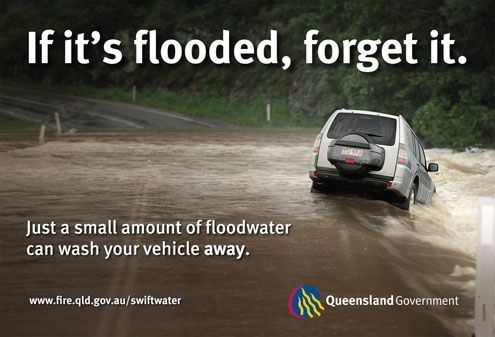Driving in Bad weather
To reduce the danger of aquaplaning: Don’t use cruise control
reduce speed and keep your tyres in a roadworthy condition.
Bad weather (rain, fog, dust)
Only use your hazard lights if you are driving in hazardous weather conditions and you are driving slowly and likely to obstruct other vehicles, or your vehicle is stopped and is obstructing the path of other vehicles or pedestrians.
When driving in bad weather:
-
Keep your windscreen and all lights clean (Queensland sun is terrible for fading plastic headlights, polishing them annually keeps them clear or have them restored)
-
Turn your headlights on when you cannot clearly see people or vehicles
-
Keep headlights on low beam – in fog you can see better on low beam than high beam
-
During the day, you may drive in fog or other hazardous weather conditions without your headlights on if you turn on your front fog lights (if fitted)
-
You may only drive with fog lights on if you are in fog or hazardous weather conditions causing reduced visibility
-
Use your air conditioner or demister to keep the windscreen clear
-
Slow down – remember the signed speed limit is the maximum safe speed for good conditions
-
Double your following distance to allow for longer reaction time and subsequent greater stopping distance .
After driving through deep water, drive slowly with your foot on the brake for a short
distance. This helps the brakes dry out.












